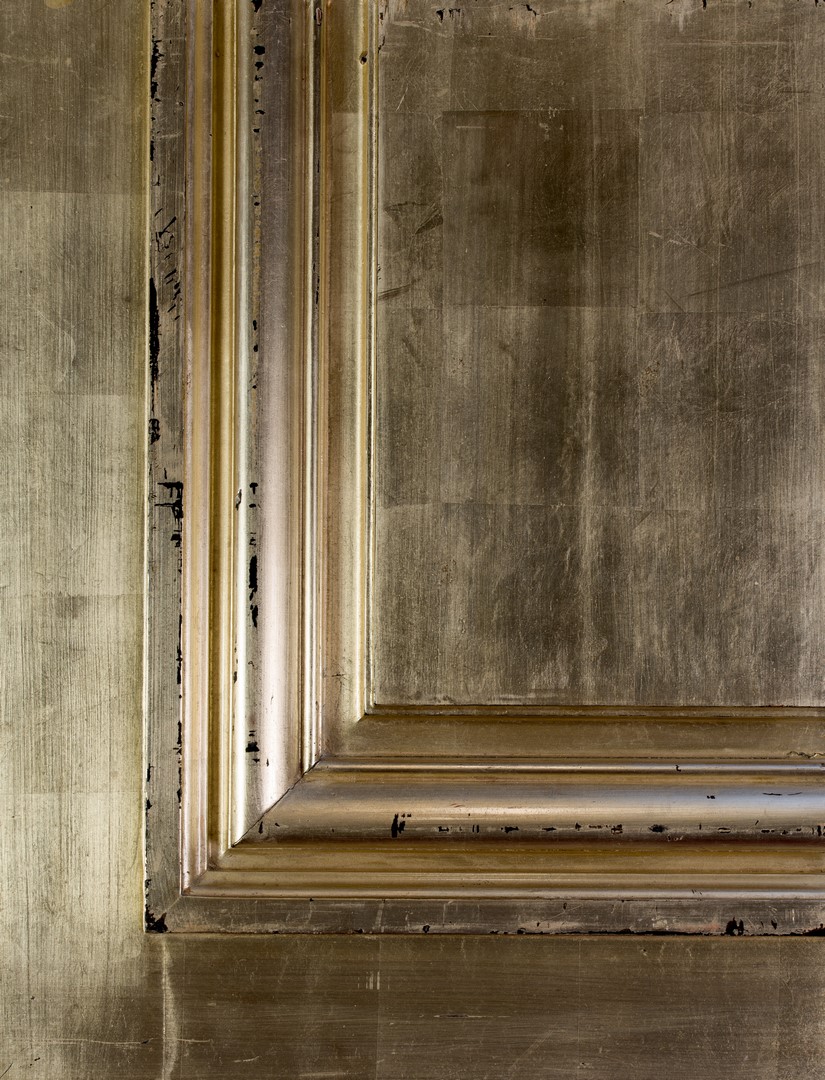The secrets of gilding
Woodwork and carved wood ornamentation needs to be prepared for gilding with a layer of chemi- cals (calcium carbonate) and animal-based mate- rials (hide glue), combined in very precise proportions in order to cover and protect the wood surfaces. In water-based gilding, an average of seven of these layers is applied, each one rubbed down with water-based abrasives, sometimes even with the traditional horsetail stems, in order to produce completely smooth surfaces.
It is possible to date antique gilding work by examining the tiny cracks in these surfaces resulting from shrinking and swelling over time. Once the top layer has been newly resurfaced with hide glue and brown ocher, layers of bole are applied (it can be red, yellow, black, or blue), and the gold leaf is attached to the wetted surface. Everything is left to dry for several hours, at which point an agate burnisher is used to fix the gold leaf firmly in place and make it gleam brilliantly. To create an antiqued effect, the gilder may rub down the gilded sur- face to show where the leaves overlap, or expose some of the layer underneath. The finishing touches are the addition of a layer of water color or of powder to imitate dust. A gilder with a solid knowledge of art history can not only restore but replace gilding to make it look either worn and tarnished or still new and shiny. Needless to say, Atelier Premiere London’s team of gilders are past masters of the complete range of gilding techniques.










